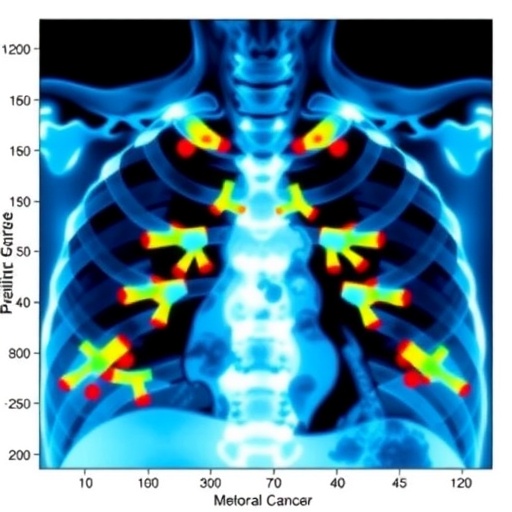For use in IoT chemical sensors that can diagnose diseases through breath tests
![]()
Credit: COPYRIGHT (C) TOYOHASHI UNIVERSITY OF TECHNOLOGY. ALL RIGHTS RESERVED.
Overview:
Third-year doctoral student Toshiaki Takahashi, associate professor Kazuhiro Takahashi, and their research team from the Department of Electrical and Electronic Information Engineering at Toyohashi University of Technology developed a testing chip using semiconductor micro-machining that can detect volatile gasses in exhaled breath in ppm concentrations at room temperature. A polymer that expands and contracts when gas is absorbed is formed on a flexibly deformable nanosheet, and the amount of deformation that occurs when a target gas is absorbed is measured, allowing gas to be detected at high sensitivity. The testing chip, which is formed in the size of a few square millimeters with semiconductor micro-machining technology, is expected to contribute to telehealth as an IoT gas sensor that can easily be used in the home for breath tests.
Details:
There are testing methods that measure specific molecules in the breath and blood that are an index for identifying the existence and degree of progression of various diseases. Among them is non-invasive measuring through breath testing, which is a promising testing method for diseases with low patient burden that has attracted attention in recent years. It is reported that volatile organic compounds included in exhaled breath increase in concentration in cases of diabetes, renal failure, lung cancer, etc., and it can be expected that these laboratory markers will be measured for use in patient screenings. Previously developed semiconductor gas sensors have a film formed on a sensor whose electrical resistance and capacitance change in reaction to a gas, and measurements are made by heating the film to several hundred degree Celsius. However, in order to reduce temperature increases in peripheral circuits due to heating, the separate forming of a structure that separates the heating parts from the periphery is required, and the increased complexity of manufacturing processes and the decrease of the integration per unit area due to the isolation of elements are issues. Also, the increase in power consumption caused by heating poses a problem for applications in IoT devices.
Therefore, the research team developed a sensor that forms a polymer material that expands and contracts when gas molecules are absorbed on a thin, flexibly deformable nanosheet, and it measures the amount of the target gas absorbed in terms of the amount of deformation of the sheet. The proposed sensor uses the interferometric property of light intensification through a narrow gap to determine gas adsorption in terms of color change. With this technology, a testing chip was realized that can measure gas at room temperature without a heating mechanism. Also, this sensor can increase the sensitivity without increasing the area because of the formation of a narrow, sub-micron air gap of up to a few hundred nanometers between the thin nanosheet that changes shape and the semiconductor substrate. However, it was very difficult to merge the thin nanosheet above the sub-micron air gap while forming the gap, and it was necessary to develop a new manufacturing process to achieve the structure. Therefore, the team focused on the strong adhesive properties of the thin nanosheet when heat and pressure are applied. A new manufacturing process was introduced where two different silicon substrates are adhered, and then the substrate on one side is removed to create a sensor structure with a sub-micron air gap of about 400 nanometers. In comparison to traditional sensor structures formed with a gap of a few micrometers, the sensor response was demonstrated to have improved by 11 times, and it was possible to determine the deformation of the thin nanosheet due to gas adsorption in terms of color change.
Additionally, it was demonstrated that the testing chip that was developed can detect ethanol gas, a typical volatile organic compound, in ppm concentrations. The lower concentration detection limit is equivalent in performance to the most sensitive semiconductor sensors that can measure at room temperature, and compared to sensors that use the same detection method, the detection performance improved by 40 times, while the area per single element was reduced to 1/150. The sensor can be expected to be used as a small, portable breath testing device.
Future Outlook:
The research team plans to demonstrate the possibility of using the semiconductor sensor they developed to detect various volatile gasses related to diseases. Also, they aim to construct a small, portable sensor system for breath monitoring that consumes less power than traditional IoT gas sensors.
###
Reference:
Toshiaki Takahashi, Yong-Joon Choi, Kazuaki Sawada, and Kazuhiro Takahashi, A ppm Ethanol Sensor Based on Fabry-Perot Interferometric Surface Stress Transducer at Room Temperature, Sensors, DOI: 10.3390/s20236868.
This research was supported by JSPS KAKENHI Grant Number JP19J12825 and JST, PRESTO Grant Number JPMJPR1526.
Media Contact
Yuko Ito
[email protected]
Related Journal Article
http://dx.




